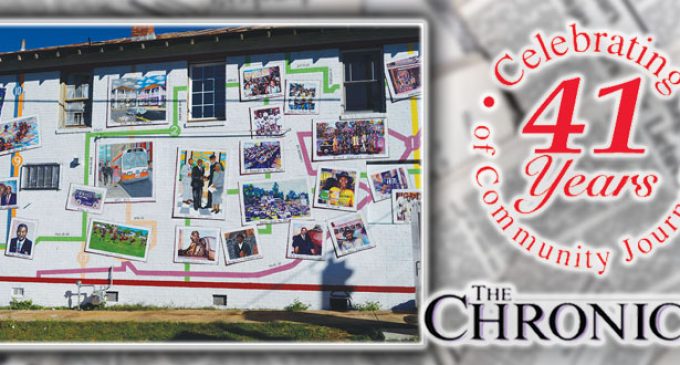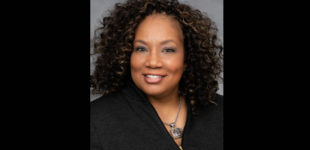Looking back at East Winston

A mural featuring East Ward land-marks and notable residents was unveiled Nov. 11, 2015. The mural, located on the side of the 14th Street Discount store, features historical locations and local legends from the East Ward.
BY LINDA DARK
SPECIAL TO THE CHRONICLE
For those born after segregation in the South, as well as those who moved to Winston-Salem from other locations, there may be a mistaken perception of traditional and historical “black neighborhoods.” I was a child of these neighborhoods, born and raised in this segregated Twin City. This is a look back at “East Winston,” as we called it.
Back in the day (prior to the 1950s), the neighborhood was a solid foundation of many people. It was a protected enclave, where “colored” persons, then “Negro” (with a capital N), then “black people,” had a sense of pride, industry, entrepreneurship, and expectations – even though “opportunity” was limited. It was a time when young people were warned: “You must be a credit to your race,” “Don’t embarrass us in public,” or, “You are no better or worse than anyone else.”
The community could not be painted with one brush. But everyone knew we had to work together to improve our lot.
What some of the mainstream population did not realize was that we had just about every service that a thriving community needed. In 1936, after years of intense negotiation, Kate B. Reynolds Hospital was opened for blacks, becoming a training site for medical personnel nation-wide. We had our doctors, lawyers (eventually a judge), library (the Malloy-Jordan Branch), churches, a Catholic primary and high school/boarding school, instructional cosmetology and business schools, cab companies, trained embalmers/funeral homes, a heating-oil distribution company, brickmasons/construction companies, insurance companies, cafes, grocery stores, movie theaters, barbers and pharmacists, policemen and bail bondsmen. Scales Bonding opened in 1924 with Walter Long, an early detective, assisting.
We had our own schools (separate but unequal in books, equipment, facilities and labs; however, NOT our teachers). Our teachers were excellent, in both academic preparation, and in “caring” for students. They cared; so they PUSHED.
One significant accomplishment: Winston was home to the only black-owned/operated bus transportation system in the country – The Safe Bus Company (forerunner of WSTA). This was the only time I remembered witnessing black folk working together cooperatively, for the common good, for they recognized there was a common barrier affecting all of us.
The African proverb was in effect, even if no one actually spoke it: “It takes a village to raise a child.” So, children were raised, watched, protected, and yes, disciplined, by the village: parents, grandparents, neighbors, church members, aunts, uncles – without fanfare, without argument, without discord, without rudeness.
Most children grew up to become educated, productive citizens.
Unfortunately, with integration, the close ties to the fabric of the community began to unravel as business customers moved away, schools closed, students were transferred, and the turbulence of the mid-1960s and 1970s arrived.
Perhaps we have come full circle now, to finally understand that the “village” must be reconstructed, to get back to that joint cooperation and excellence that once bound us into a diverse collaborative neighborhood “family.”
Linda Dark is the assistant archivist with the Society for the Study of Afro-American History in Winston-Salem and Forsyth County.











